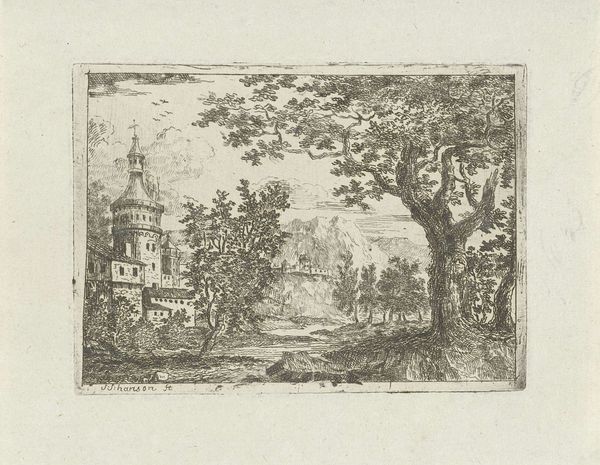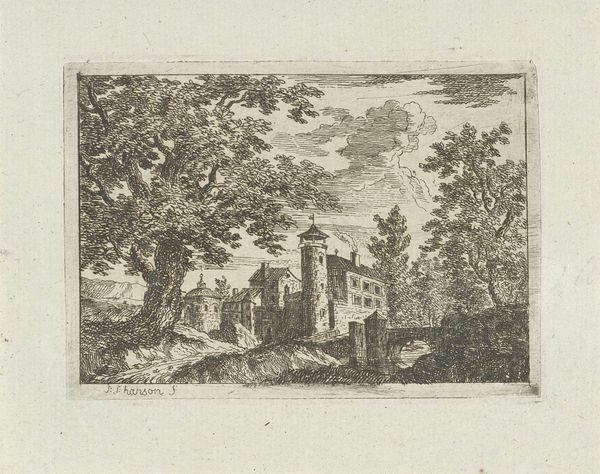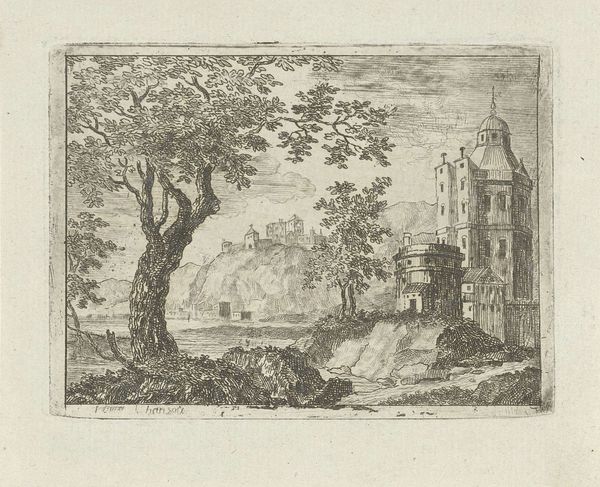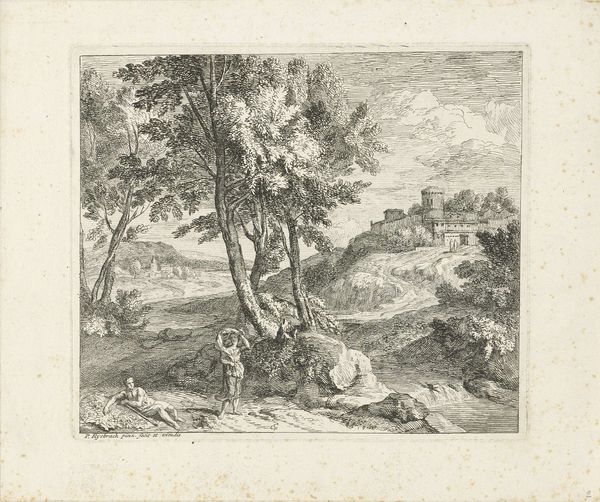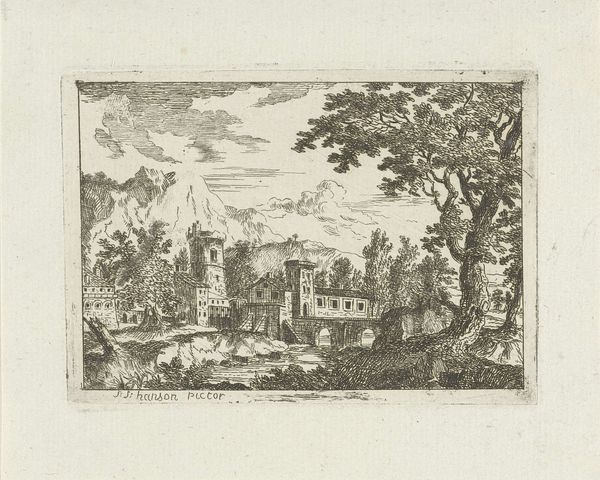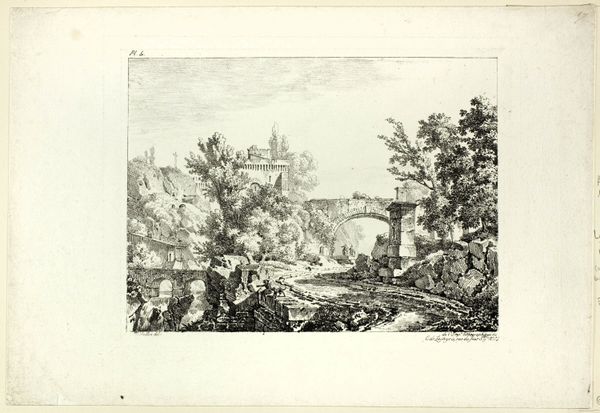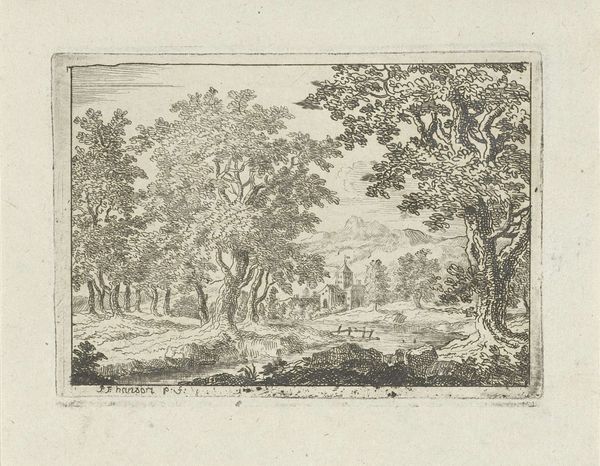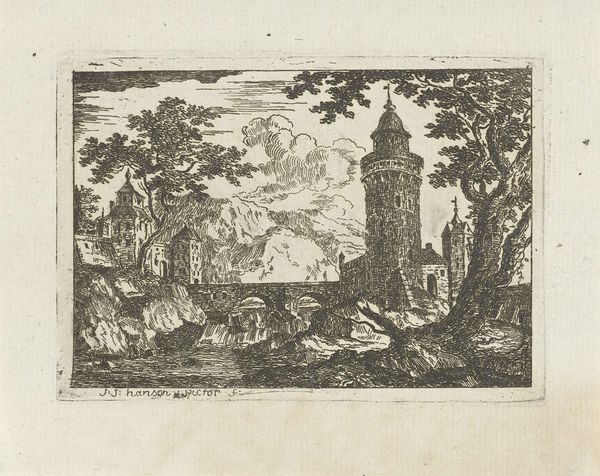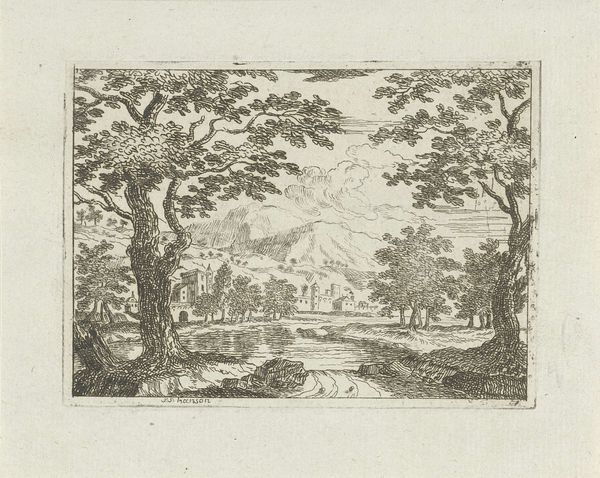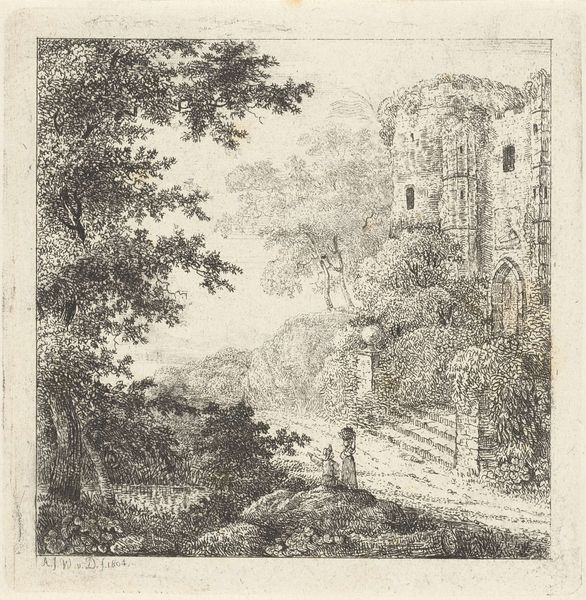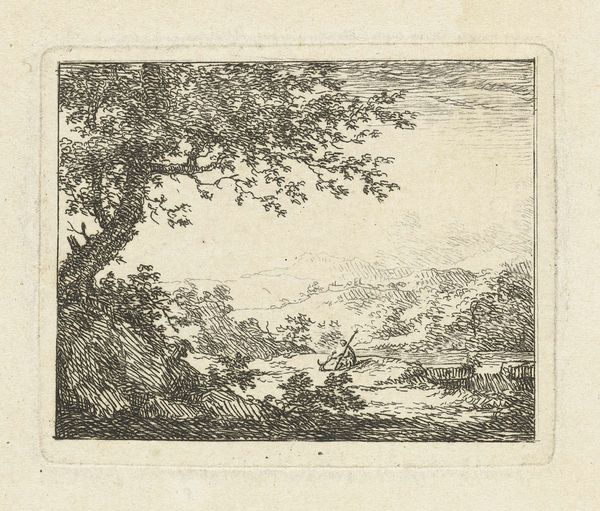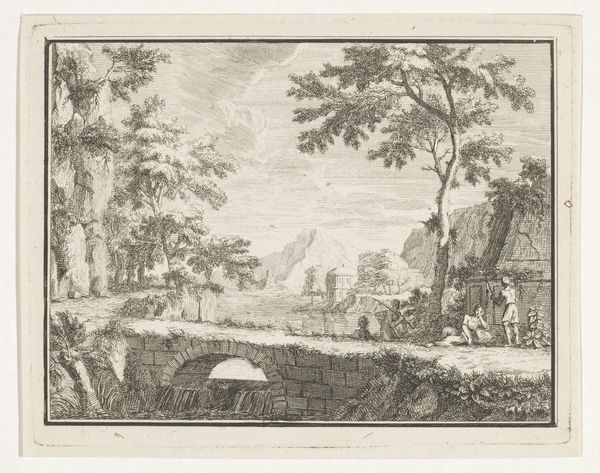
Dimensions: height 92 mm, width 108 mm
Copyright: Rijks Museum: Open Domain
Curator: Before us is "View of a Bridge over a River with a Waterfall," an etching by Daniël Dupré, dating back to 1777. Editor: The way the artist etches those feathery trees is absolutely beautiful; the print reminds me of quiet afternoons. There's a kind of melancholy to the ruined buildings, juxtaposed with the living landscape. Curator: It’s a baroque-era landscape, emphasizing detail. Look closely, and you'll see a bridge that, although apparently rustic, speaks volumes about eighteenth-century infrastructure. Prints like these circulated widely, becoming essential to understanding design. Editor: Yes, but I am thinking about the romantic aspect. The ruin seems placed there as if to be consumed in thought. The landscape around it, so full, feels like the embodiment of nature's inevitable reclaim. It almost whispers a story of human endeavor meeting the forces of entropy, like our bridge with men traveling atop it. Curator: It also subtly conveys social structure. The shepherd with his flock becomes both subject and audience. Through his position, we get this understanding of consumption and commodity culture that defined that period of increased social stratification. This etching provided viewers the chance to contemplate nature’s relation with man. Editor: It gives a somber yet hopeful air about that relation, I think! Perhaps it has something to do with the way the buildings mirror the natural landscape on either side, how their decline emphasizes human creation as inherently transient. Curator: True. Etchings allowed wider audiences access to the ideals that shaped elite gardens and architectural taste, and this piece suggests nature could also humble wealth. This view aestheticized decay, and made this image more available, furthering the art market and its processes. Editor: I get the sense that I’m invited not just to understand a system but to daydream on the same plane as the characters! I like to think the landscape is offering them something they in turn will be making into something that in turn will change over time. Curator: It’s a fascinating print. Its existence owes so much to accessibility to processes such as the etching medium and consumer culture it supported, providing context on so much more than its genre would offer at a first glance. Editor: I agree! It lets us consider this very broad tension, like we discussed: between nature’s lasting indifference and our fleeting aspirations, represented so finely and dynamically through Dupré's hands.
Comments
No comments
Be the first to comment and join the conversation on the ultimate creative platform.
